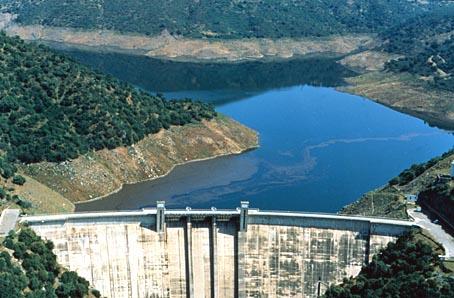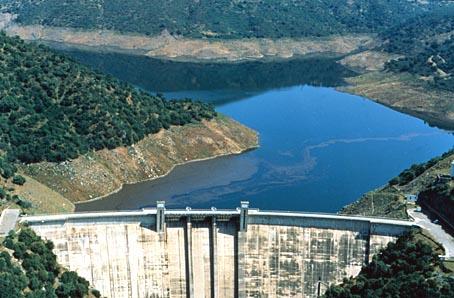Hornachuelos

The town is situated in the west of the province, at the foot of the Sierra Morena. Although the River Guadalquivir flows through its lowlands, most of the municipal area in the province, and one of great scenic value, with its cork oaks, holm oaks and undergrowth, in addition to riverside woods of willows, ashes and alders. The area is also an important wildlife and hunting centre. Its wealth of natural resources is rounded off by its breathtaking landscape and its hydrological value, with two reservoirs, El Retortillo and Bembezar, standing within the town's boundaries.
Hornachuelos stands atop a hill facing the source of Bembezar Reservoir, its urban structure adapted to the terrain to create a village of great beauty, whose highlights are the Castle and Santa María de las Flores Church.
History
The town's origins remain unclear. Some have identified it with the ancient settlement of Anarelos or with Celtis, the latter of which appears in Antoninus' Itinerary and is mentioned by Pliny.
Existing remains place its most recent origins in the 11th century, and its reconquest by Ferdinand III 1240 and subsequent adherence to the Council of Cordoba on the orders of Alfonso X are both documented.
In 1637, don Lope de Hoces was given jurisdiction and lordly control over the town by Philip IV, while in 1640, don Alonso Antonio de Hoces was awarded the title of First Count of Hornachuelos and second Lord of the village.
Hornacho means "a hollow made in the mountain to extract minerals", a name which bears witness to its mining origins. This would explain why al-Idrisi (12th century) and Ibn al-Abbar (13th century) wrote "furnayulush" in reference to a place close to the town where silver and gold were mined.
Part of the play "Don Alvaro o la Fuerza del Sino" ("Don Alvaro or the Power of Fate"), by the Duke of Rivas, takes place in Hornachuelos, specifically in the kitchen of Señor Monipodio and Señora Colasa's restaurant.

- Max 14
- Min 10
- Max 57
- Min 50
- °C
- °F








